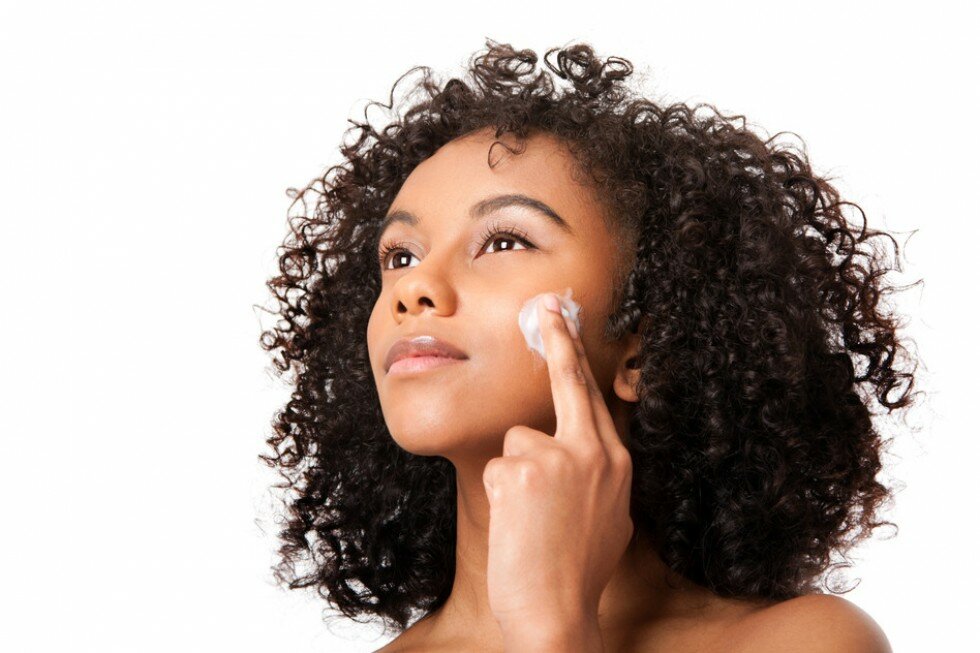By Janet Adeyemo
Skin bleaching refers to the process of lightening dark parts of the skin.
Products that can be used to lighten the skin includes, bleaching creams, bleaching soaps and pills.
Wow! Did you just realise that there are certain pills that can bleach the skin? This is the extent to which some persons go, in their desire to have a lighter shade of skin.
Medically, there is no need to lighten your skin.
In as much as there is no health benefit in bleaching, it is important to weigh your decision before you purchase your next bleaching product.
How does bleaching creams works?
Have you wondered how this creative combination of chemicals function on the skin to give you that desired tone.
Here is how your skin bleaching product works.
How skin bleaching works:.
Skin bleaching reduces the concentration or production of melanin in the skin. Melanin is a pigment produced by cells called melanocytes. The amount of melanin in your skin is mostly determined by genetics.
People with dark skin have more melanin. Hormones, sunlight, and certain chemicals also affect melanin production.
When you apply a skin bleaching product to the skin, such as hydroquinone, it decreases the number of melanocytes in your skin. This can result in lighter skin and a more even appearance to the skin.
According to Healthline, here are varying effects if skin bleaching.
SKIN BLEACHING SIDE EFFECT:
1) Nephrotic syndrome is a kidney disorder often caused by damage to the blood vessels in your kidneys responsible for filtering waste and excess water. It causes your body to excrete too much protein in your urine.
Skin lightening creams containing mercury have been associated with nephrotic syndrome.
Symptoms can include:
• swelling (edema) around the eyes
• swollen feet and ankles
• foamy urine
• loss of appetite
• fatigue
2) Exogenous ochronosis (EO) is a skin disorder that causes blue-black pigmentation. It usually occurs as a complication of long-term use of skin bleaching creams that contain hydroquinone. People who use it on large areas of the body or on the entire body are more likely to develop EO.
This is a more common effect of skin bleaching. Do you bleach, have you noticed this on your skin? Be calm, it is just an effect of skin bleaching.
3) Skin bleaching creams that contain corticosteroids can cause steroid acne.
Steroid acne mostly affects the chest, but can also show up on the back, arms, and other parts of the body with long-term use of corticosteroids.
Symptoms can include:
• whiteheads and blackheads
• small red bumps
• large, painful red lumps
• acne scars
Other effects includes Mercury Poisoning, Dermatitis – a man inflammation of the skin.
Signs and symptoms of mercury poisoning include:
• numbness
• high blood pressure
• fatigue
• sensitivity to light
• neurologic symptoms, such as tremor, memory loss, and irritability
• kidney failure
Most times, individuals are overwhelmed by the light complexion resulting from skin bleaching.
In as much as the side effects have been stated, here are some benefits of skin bleaching products:
1) Skin bleaching product can be used to minimize dark spots, especially in persons with liver spot, sun spots, freckles, post inflammatory mark such as eczema. Generally, skin bleaching products can be used to minimize discoloration.
2) Skin bleaching product can be used to treat hyperpigmentation
Here is how to use skin lightening product:
The use of skin lightening product varies in products use. Notwithstanding here are tips to guide you if the need arise to use one:
1) Apply the product moderately, using clean hands or cotton wool.
2) Avoid contacts with surrounding skin, especially if the product is needed to treat inflammatory.
3) Avoid touching the treated area against another’s skin.
4) Apply sunscreen to prevent skin damage from Ultraviolet exposure.
Is the use of skin bleaching product necessary?
Well, it is yours to answer, you are responsible for the care of your body.

